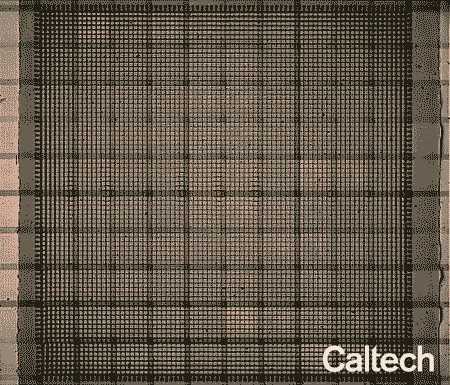
Posted on 09/11/2019 5:51:14 PM PDT by BenLurkin
While most reconfigurable materials can toggle between two distinct states, the way a switch toggles on or off, the new material's shape can be finely tuned, adjusting its physical properties as desired. The material, which has potential applications in next-generation energy storage and bio-implantable micro-devices, was developed by a joint Caltech-Georgia Tech-ETH Zurich team in the lab of Julia R. Greer.
Most materials that are designed to change shape require a persistent external stimulus to change from one shape to another and stay that way: for example, they may be one shape when wet and a different shape when dry—like a sponge that swells as it absorbs water.
By contrast, the new nanomaterial deforms through an electrochemically driven silicon-lithium alloying reaction, meaning that it can be finely controlled to attain any "in-between" states, remain in these configurations even upon the removal of the stimulus, and be easily reversed. Apply a little current, and a resulting chemical reaction changes the shape by a controlled, small degree. Apply a lot of current, and the shape changes substantially. Remove the electrical control, and the configuration is retained—just like tying off a balloon. A description of the new type of material was published online by the journal Nature on September 11.
Defects and imperfections exist in all materials, and can often determine a material's properties. In this case, the team chose to take advantage of that fact and build in defects to imbue the material with the properties they wanted.
[T]the team designed a silicon-coated lattice with microscale straight beams that bend into curves under electrochemical stimulation, taking on unique mechanical and vibrational properties. Greer's team created these materials using an ultra-high-resolution 3-D printing process called two-photon lithography....
[T]he team fabricated a sheet of the material that, under electrical control, reveals a Caltech icon.
(Excerpt) Read more at phys.org ...
Genesis of the T1000?
Not what I was expecting. Most news about metamaterials is about material specially constructed to have a negative index of refraction. This stuff sounds more like memory metal.
My mom bought me metamaterial in the 70’s from K-Mart.
But when I tried to fly it, it went in the back yard of our neighbor antique dealer and his St. Bernard’s ate it.
Sky net is happening

Sounds like something out of Bruce Wayne’s Bat Cave.
Or is it transformium?
Flubber.
Sounds like the bad guy in Terminator II.

Thanks!
Disclaimer: Opinions posted on Free Republic are those of the individual posters and do not necessarily represent the opinion of Free Republic or its management. All materials posted herein are protected by copyright law and the exemption for fair use of copyrighted works.